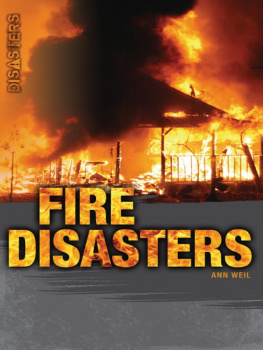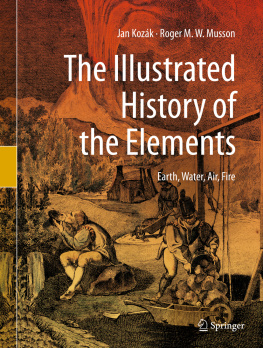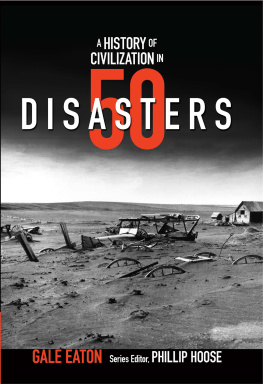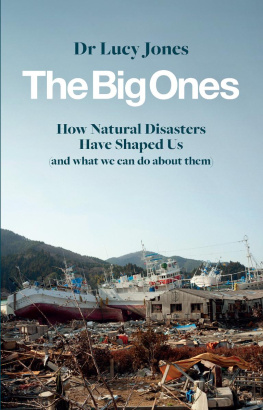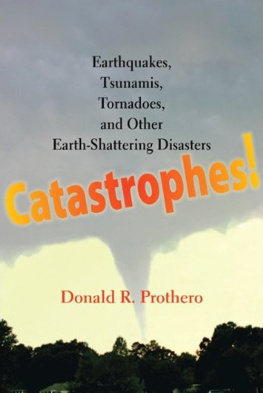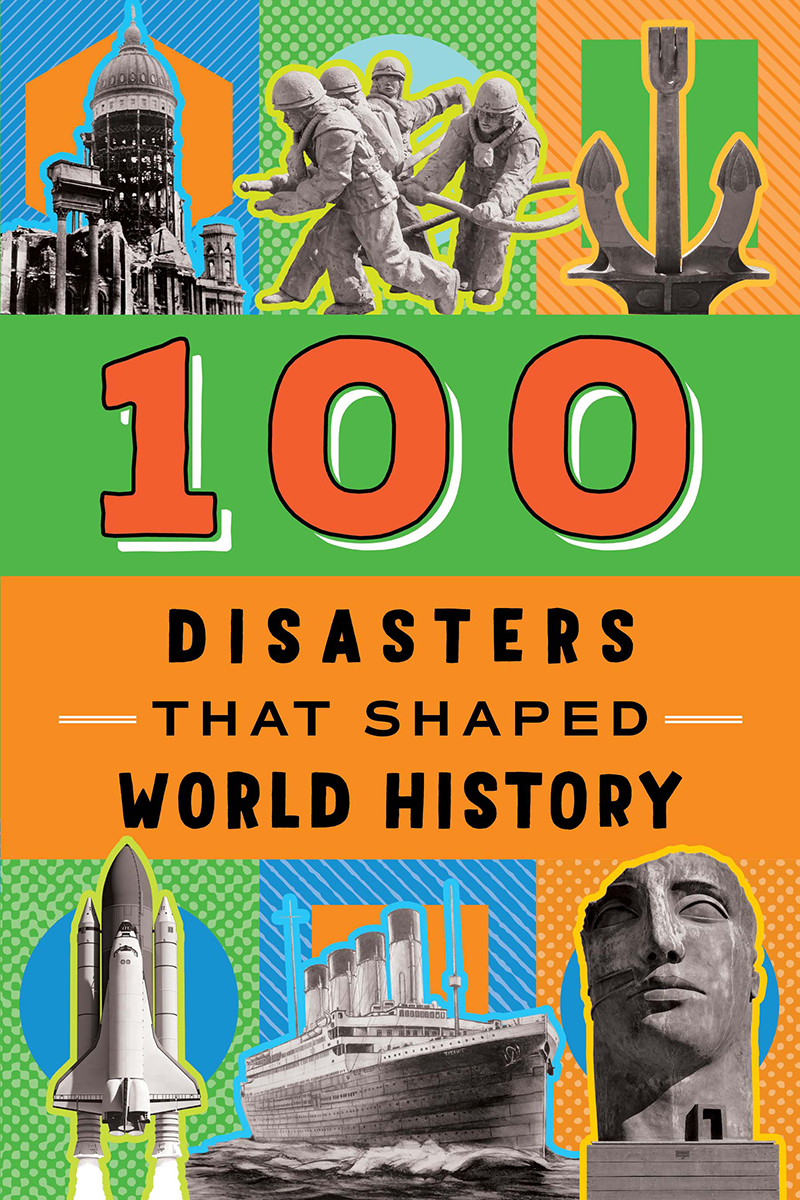Contents
Guide
Pagebreaks of the print version
Copyright 2022 by Sourcebooks
Text by Joanne Mattern
Illustrations by Westchester Publishing Services
Series cover design by Emma Hall
Cover images Barbara Bednarz/Shutterstock, Everett Collection/Shutterstock, 3Dsculptor/ Shutterstock, antoniradso/Shutterstock, SpotLuda/Shutterstock, Kyle Hayama/Shutterstock
Cover and internal design 2022 by Sourcebooks
Sourcebooks and the colophon are registered trademarks of Sourcebooks.
All rights reserved.
This publication is designed to provide accurate and authoritative information with regard to the subject matter covered. It is sold with the understanding that the publisher is not engaged in rendering legal, accounting, or other professional service. If legal advice or other expert assistance is required, the services of a competent professional person should be sought. From a Declaration of Principles Jointly Adopted by a Committee of the American Bar Association and a Committee of Publishers and Associations
All brand names and product names used in this book are trademarks, registered trademarks, or trade names of their respective holders. Sourcebooks is not associated with any product or vendor in this book.
Published by Sourcebooks eXplore, an imprint of Sourcebooks Kids
P.O. Box 4410, Naperville, Illinois 605674410
(630) 961-3900
sourcebookskids.com
Cataloging-in-Publication Data is on file with the Library of Congress.
Contents
Introduction
Terrible storms, devastating earthquakes, powerful explosionsdisasters come in many different forms. Sometornadoes, hurricanes, floods, droughtsare caused by bad weather. Some, such as volcano eruptions and earthquakes, are caused by natural changes in the earth. Still more have human causestrain wrecks, plane crashes, burning buildings, oil spills, and nuclear dangers.
Some disasters are noteworthy because of the number of people who perished because of them. Some of these totals are hard to comprehend, such as the estimated 500,000 killed by the Bhola cyclone in 1970. Other disasters may not claim many lives, but they level cities or destroy large portions of the environment, like the Great Fire of London in 1666 and the oil spill caused by the Exxon Valdez. Some disasters, such as pandemics of deadly diseases, are truly worldwide in scope.
Whatever form they take, disasters have fascinated people for thousands of years. From ancient civilizations to today, our histories record a variety of disasters. The ancient Greeks described how the Colossus of Rhodes, one of the Seven Wonders of the Ancient World, was destroyed by an earthquake around 225 B.C. Todays new sources frequently report on details of tragedies and destruction.
Why are people so fascinated by horrific accounts of death and destruction? Often, we are drawn to the personal stories involved. The tragic loss of life on the Titanic, for example, has been made into several popular movies and countless books. Other times we are simply awed by the destructive power of nature, demonstrated in a hurricane or tornado, or baffled by the error in human judgement displayed in so many mechanical failures or crashes.
It is also humbling to realize how suddenly a disaster can strike and change lives forever. Earthquakes destroy cities in a matter of seconds, and a plane can fall out of the sky with no warning. Why do these things happen? How can we cope with such stunning events? Reading about disasters gives us a chance to ponder these questions and, possibly, come up with answers that make sense to us, and solutions to ensure fewer disasters in the future.
Disasters also show us how one event can change history. Irelands potato famine during the 1840s sent a wave of immigrants to America to start a new life, changing the face of the United States forever. Tragic fires such as the Cocoanut Grove or the MGM Grand changed laws and building requirements, preventing future loss of life. Terrorist attacks have created heightened security protocols and changed the way people go about their daily lives.
This book features 100 disasters, and covers almost 2,000 years, from the volcanic eruption that buried the Roman town of Pompeii in 79 A.D. to more recent events like the Fukushima Daiichi nuclear disaster in 2011. Included are many different kinds of disastersearthquakes, tornadoes, explosions, mining accidents, and even a molasses flood. These disasters took place all over the world, from remote villages to huge cities, proving that events can go out of control anytime and anyplace.
Along with well-known disasters, such as the sinking of the Titanic, the 1906 San Francisco earthquake, and the terrorist attacks of September 11, 2001, this book includes less publicized events too. However, it is by no means meant to be a comprehensive list of disasters. Some events, though devastating in scope, were unable to be included because of a lack of information. For example, in the last century, China has had many floods and earthquakes with death tolls in the hundreds of thousands, but the Chinese government released very few details of these calamities. Similarly, it is often difficult to find information about events that happened hundreds of years ago, since records from ancient times are often incomplete or lost entirely. This book should serve as an introduction to the many different disasters that have struck our world and changed lives throughout history.
1. Eruption of Mount Vesuvius and Destruction of Pompeii August 24, 79 CE

Time stopped in the Italian cities of Pompeii and Herculaneum on August 24, 79 CE. That morning, a volcanic eruption buried the two towns, hiding them from the world for centuries.
Pompeii was a large town in the kingdom of Rome (now southern Italy). Herculaneum was a small town about ten miles northwest of Pompeii. Both towns lay in the shadow of Mount Vesuvius, an active volcano that towered 4,190 feet above the Bay of Naples.
August 24 was a normal summer day in both towns. Shops opened, and people went about their daily chores. Families gathered together to share meals. In Herculaneum, a festival was being held to honor Romes first emperor.
Suddenly, there was a deafening crack. The earth shook. Then the whole top of Mount Vesuvius broke open, releasing a flood of red-hot lava. Along with the lava came huge rocks, waves of mud, and a thick cloud of smoke and dust.
Thousands of residents fled in terror, trying to escape the choking clouds and the hot chunks of burning lava raining down on them. A Roman writer named Pliny the Younger later wrote that the terrible darkness was not a moonless night, but the darkness of a sealed room.
By the time the wave of mud, lava, and dust ended, Pompeii and Herculaneum were nowhere to be seen. The entire area was covered by a thick layer of ash and mud. Streets, buildings, homes Everything had disappeared. In Herculaneum, the lava and mud were so thick that they hardened into an 80-foot-deep layer of solid rock.








